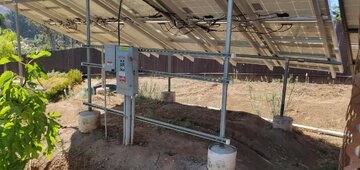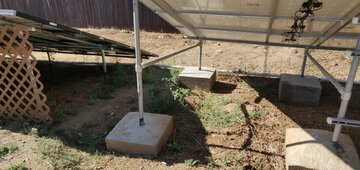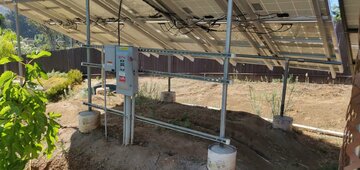I posted these elsewhere I think on the forum. Anyways, sola tubes, 12 inches in diameter to the depth you need is simple to set, fill and plumb your post.
If you cannot dig deep due to ground conditions, then the 2 blocks you see were built at direction of structural engineer:
They measure 24x24x24 inch cubes. They are built out of the cheapest panels you can get and nailed at the corners. The insides were sprayed before pouring with vegetable oil for easy release. The cube is set into the ground about 6-12 inches so it does not slide when poured. The inside volume of the cube is steel reinforced by building a rebar frame of approximately 16x16x14 inches just connected together with the concrete wire ties. Then the rebar frame is held off the ground by the small concrete rebar blocks or even a piece of brick. Your array post is set in the center of the empty block with the rebar. The post has a small piece of strut like 6 inches u-bolted to it so it will not ever rotate in the concrete.
Once all your forms have been made and string aligned, pour the four corner blocks and align and plumb up your posts. Each block will require 10 bags of concrete, 100 lbs each and final weight between 1000-1100 pounds each. I suggest you purchase or rent a small concrete mixer and each pour is maybe 45 minutes to an hour.
Every post you add to the array adds 1000 -1100 of ballast.
To build the forms, each 4 x 8 panel will can be cut into 8 pieces and will make 2 4 sided forms. They can be reused, but in our case the inspector wanted to see all forms in place with rebar prior to pouring.
When pouring the forms, strike the sides of the forms with a rubber mallet or 3 lb mallet to remove air pockets and settle the concrete in the forms.
This method is a little labor intensive compared to sola tubes, but it works and is not complicated. And i can tell you after 8 years it performs well, but we have no freezing weather.
If pouring, make certain to angle the top of cubes so water drains away on all 4 sides of the top from the post.









